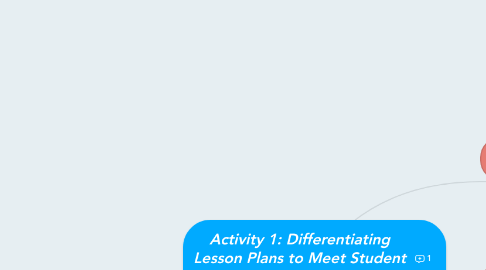
1. BY Ankita Mohanan
2. The objective for Kindergarten: English grammar and usage when writing or speaking.
2.1. Learning Profiles
2.1.1. Visual Students
2.1.1.1. Student prefers to use visual images, pictures and spatial understanding
2.1.1.1.1. Visual learners can find information by rewinding the tape in their minds. Give the child extra time to answer questions, or give him the questions before class starts so he has time to convert pictures into words, and vice versa if need be.
2.1.1.1.2. Colour Code: Using colors to highlight information will help the child “see” information on the page or board, and recall it later. It's a great way to visually call out text in a somewhat pictorial way.
2.1.1.1.3. Internet Resources: As your child starts to explore different topics and time periods, use the Internet to show him what he’s learning.
2.1.2. Solitary Students
2.1.2.1. Students prefers to work alone and use self study.
2.1.2.1.1. As they are self learners give time time to do activities on their own.
2.1.2.1.2. Try centering the lesson plans around things they are already interested in and use their interest as a vessel to learn new things.
2.2. Interests
2.2.1. Music Smart
2.2.1.1. Students enjoy learning through music and movement.
2.2.1.1.1. Entering a classroom can be intimidating for people of any age. For young children, it can be particularly daunting. Music can really help to make your classroom warm and inviting.
2.2.1.1.2. Even when children don’t fully understand all the lyrics, they are excited to try to sing along. When you have songs with simple lyrics that kids can dance and do gestures to, the children sing and learn SO quickly.
2.2.2. Reading Smart
2.2.2.1. Students love learning through story books and reading.
2.2.2.1.1. Making use of a variety of storytelling techniques such as pointing to the illustrations, commentating, asking questions and encouraging children to predict and repeat. Other techniques include pausing at the right time, varying the volume or tone of your voice, and using gestures, expressions and sound effects.
2.2.2.1.2. Using the app Creative kids, students can create their own story to share with the class. They can add extra chapters to a current story they read or just make a brand new one altogether. Students are also free to create artwork that they can use in "Show & Tell" during class.
2.3. Readiness Levels
2.3.1. Low level ELLs
2.3.1.1. The student is only emerging into the language. Understands basic and simple levels of English
2.3.1.1.1. Using a few words and phrases here and there prove to be extremely helpful. This helps with getting your point across in the class, and teaching some of the simpler vocabulary.
2.3.1.1.2. Teachers should be reminded to speak slow and clear.
2.3.1.1.3. For early learners of English, it is a good idea to give them a broad range of activities.
2.3.1.1.4. It is important to repeat all commands in order to give them a chance to listen to the individual words. By repeating your commands, the students are more likely to understand what you are saying, as they may be able to contextually put the action and the word together.
2.3.2. Moderate-High Level ELLs
2.3.2.1. Student is well capable of conversing and understanding in English. The grammar only need fine tuning.
2.3.2.1.1. One ideal way of improving the student’s vocabulary and grammar is to repeat the instruction using different words. If the student is unfamiliar with the vocabulary, they can generally use their brain to connect the dots while learning through the context.
2.3.2.1.2. Key is to keep it fun and entertaining for the students.
2.3.2.1.3. Give them activities that allow the student to add more and grow on.
